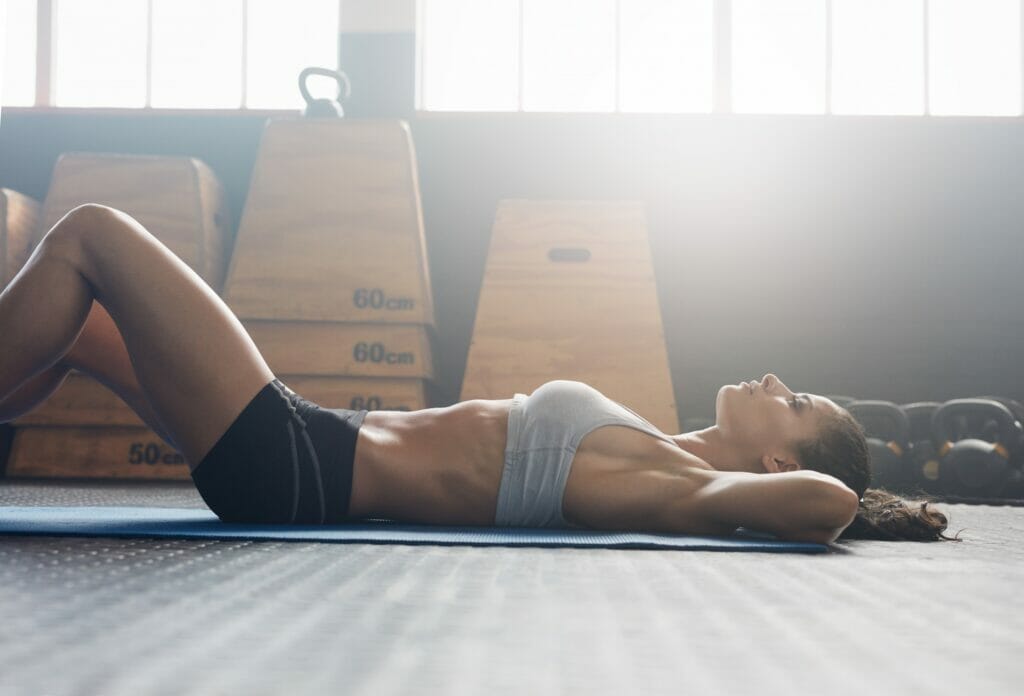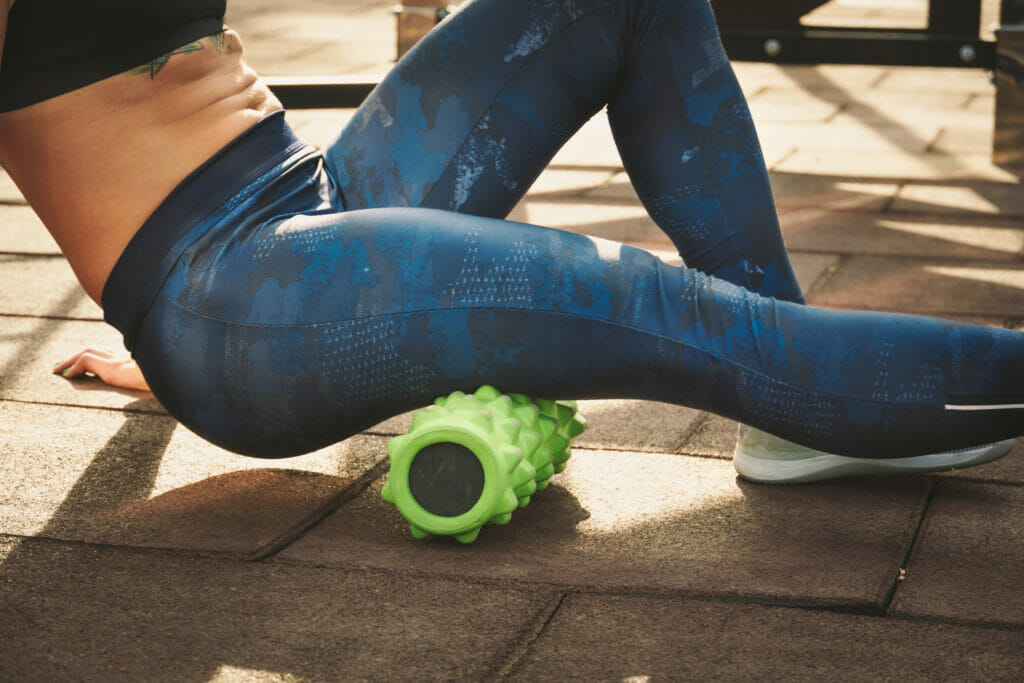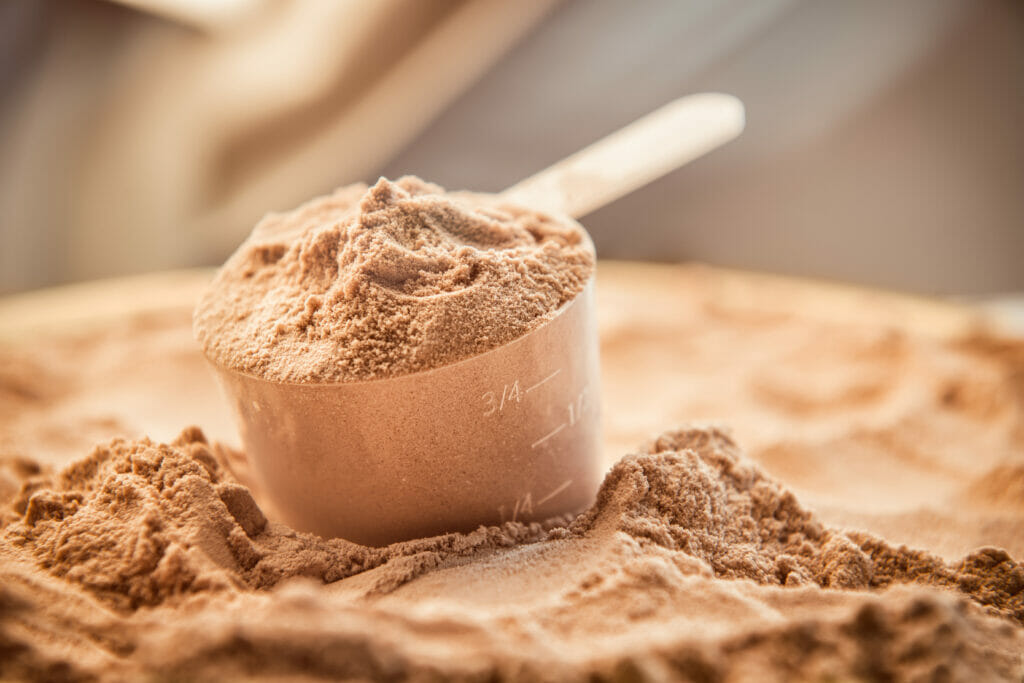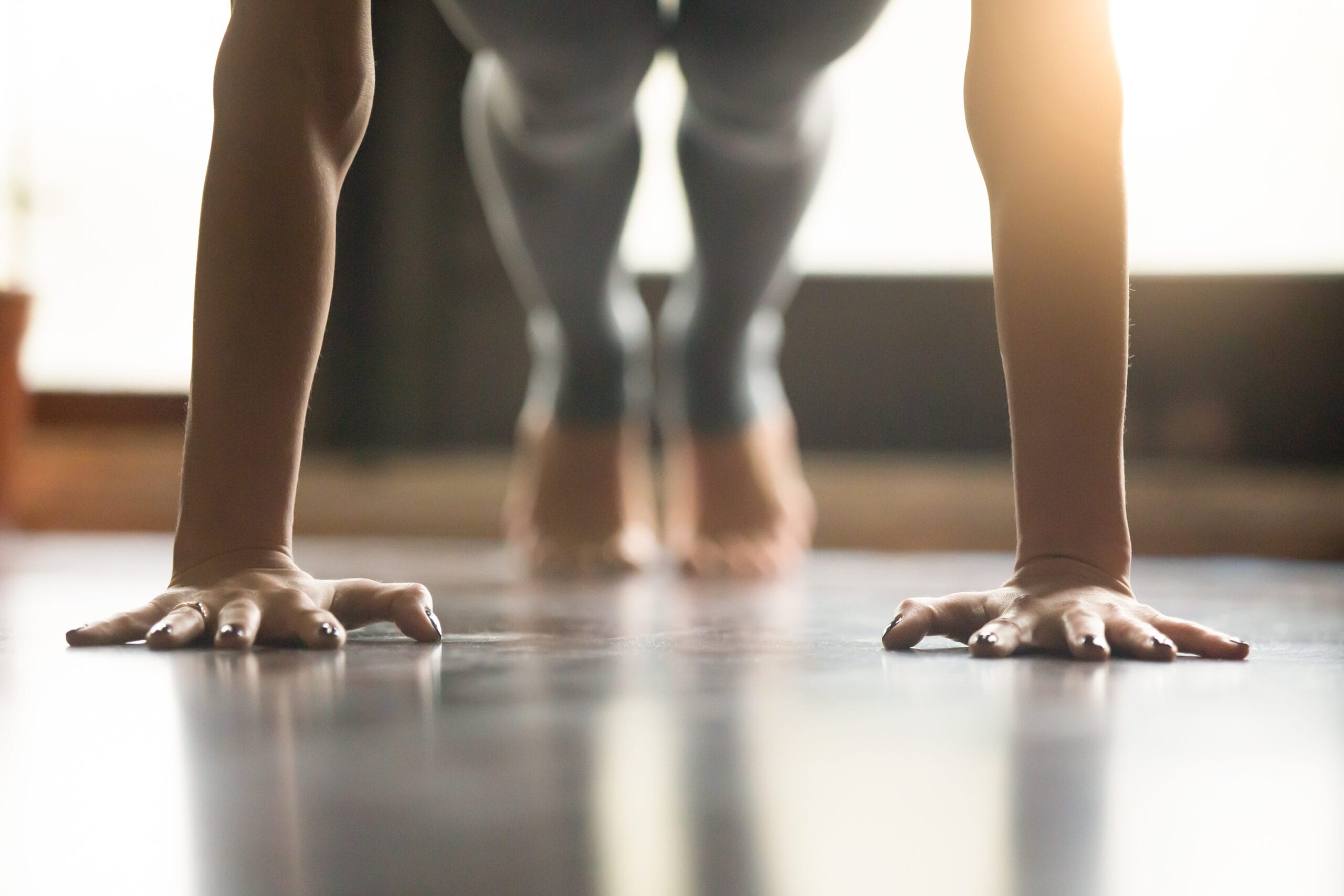
The hardest part of working out is usually getting the motivation to start in the first place, but once you get dressed, show up, and start moving, it’s usually easier to get into it.
That said, it sure feels good when that workout is over.
Not only do you have that healthy, exhausted feel, but also the satisfaction of knowing you just did something good for your body.
Yup, everything’s right in the world after a good workout… that is, until the dreaded muscle soreness kicks in a day or so later and you wonder if you were in a car accident you don’t remember.
There’s no getting around it, muscle soreness after working out sucks, but fortunately there are things you can do to help relieve the pain and shorten its duration.
In this article, I’ll be going over some relatively easy steps you can take to limit the effects of muscle soreness, but let’s start things off with a quick exercise physiology lesson.
Why Do We Get Sore After Exercise?
Muscle soreness is something I’m sure we’ve all gone through at one time or another, especially when trying a new exercise routine or starting to exercise again after a spell of inactivity.
Personally, I know my exercise habits tend to fall a bit short during the holidays, so I know I’ll be more sore than usual when I start up again in early January.
And we all know that that “new exercise pain” usually hits us a day or 2 after working out, so if you’re not that sore by the time you go to bed on the day of your workout, don’t think you’re getting away easily.
The technical term for the soreness we feel after exercise is “delayed onset muscle soreness” or DOMS, because it usually takes 24 – 48 hrs for it to kick in (and discomfort usually peaks around 72 hrs after exercise).
Well, turns out muscle soreness is a normal (and crucial) part to building stronger muscles.
In order to build stronger muscles, we need to work them to the point where the muscle fibers actually start to breakdown a little.
Don’t worry, these “micro-tears” are quite small and not harmful.
In fact, it’s these micro-tears that tell your body that it needs to rebuild the muscle a little stronger than it was to prevent it from breaking down again.
Our bodies are very good at adapting to the stresses we put ’em through and this is just another example of how our bodies do this.
Anyway, the soreness we feel after a good workout is due to these micro-traumas the muscles and tendons have gone through – it’s these micro-tears (and related inflammation) that causes the pain.
Hold on, I know what you’re thinkin’ – what about lactic acid??
A lot of folks blame lactic acid for DOMS, but lactic acid isn’t the real culprit.
Lactic acid is what builds up in our muscles during anaerobic activity, causing them to fatigue (and you to feel “the burn”) during higher-intensity exercises.
By the way, anaerobic exercise includes things like lifting weights, sprinting, HIIT, and other all-out types of activities which don’t allow your body the time to get oxygen to your muscles.
So, your body, being the smart machine that it is, stores energy in your muscles (in the form of glucose) for a quick source of energy during these short bouts of higher-intensity activity.
Well, lactic acid is a by-product of this process (known as glycolysis).
Lactic acid accumulates in the muscles during anaerobic exercise, causing them to feel fatigued, but it doesn’t stay there – your body naturally eliminates it.
And the more you do anaerobic exercise, the better your body gets at tolerating and flushing out lactic acid, allowing you to workout harder and longer.
Like I said, the body is an amazing thing.
So, long-story-short: muscle soreness, or DOMS, occurs due to the trauma our muscles go through during a strenuous workout, but this is a normal part of muscle healing and a critical component to building stronger muscles.
Even though muscle soreness is a normal part of working out and can’t be completely avoided, there are some things we can do to limit the discomfort.
5 Ways To Help Reduce Muscle Soreness After Working Out
#1 Stretch
Movement is always a good thing, but especially when your muscles are feeling tight, sore, and achy after a great workout.
Now I’m going to be honest – the research on this topic doesn’t show that stretching (before or after) exercise significantly reduces the pain associated with DOMS.
But I still think it can help with mobility, especially if you’re sore while trying to continue working out other body parts.
For example, if my pecs are sore from chest day and I’m trying to work my back, stretching my pecs out beforehand is going to make it easier for my arms to get in position to do lat pulldowns or pull ups.
So, even though stretching probably won’t eliminate the soreness, it can still make it easier to move.
And better yet, try a little self-massage with a foam roller or massage gun, which can help improve circulation and promote faster healing post exercise (and there is some research to back the use of massage for decrease DOMS pain).

#2 Hydration
Hydration is crucial for all of us all the time, but staying well hydrated can help get rid of muscle soreness too.
Staying well hydrated helps transport crucial nutrition to your muscles as it heals, which may help speed up the recovery from a tough workout.
And of course you want to make sure you replenish any fluids you lost during your workout.
And if your workout was especially tough or longer than an hour, you might want to consider using an electrolyte drink to replenish your electrolytes for even better hydration.
#3 Cardio
Technically, I guess this one would be better labeled as “active recovery”, but regardless, doing some light to moderate intensity cardio between lifting sessions is a good idea.
I discovered this years ago and thinking about it reminds me of a story I heard in college and it’s stuck with me, so I’ll share.
Anyway, I had to go to a sports medicine conference one summer as part of my college curriculum and there were all these athletic trainers, physical therapists, exercise physiologists, and whatnot there giving talks about various topics.
Well, I remember hearing a lecture from this trainer from some professional baseball team and he told this anecdote regarding one of the players he worked with.
After every game, this player would jump on a stationary bike and do 45 minutes of light-intensity cardio.
He did this to help “flush out” toxins and whatnot that may have built up in his body during the game and apparently he liked to refer to this as his “oil change” after each game.
I thought this was interesting at the time, but I didn’t really start applying it to my own life until I started getting a little older.
Personally, I can’t speak much to how effective cardio is for “flushing out toxins” or anything like that, but I do find it helpful for reducing DOMS – especially for the legs.
And I think there have even been some studies that’ve shown that doing cardio immediately after lifting weights can cut a day off the duration of muscle soreness (but I can’t remember where I saw that and don’t feel like finding it at the moment).
From my personal experience, I’ve been trying to do some moderate-intensity cardio (Peloton or treadmill) 5-6 days/week and lifting weights 3 days/week.
And I’ve noticed a pretty significant reduction in my leg soreness after leg days from doing all this cardio.
So, certainly something worth trying.
#4 Sleep
Yeah, this is a boring one, but I guess it’s still worth mentioning.
Getting enough sleep is important for pretty much every function of the body and recovering from muscle soreness is no different.
Sleep is when our bodies perform important repairs, while rebuilding and fixing all the stuff that might have become a little damaged throughout the day.
And this includes muscle breakdown from intense workouts.
This means if you’re working out a lot, you might even benefit from getting more than 8 hours of sleep each night, but the exact amount of sleep we each need for optimal recover likely varies.
Regardless, getting plenty of sleep is a must when trying to reduce the effects of muscle soreness.

#5 Nutrition
Getting all the proper nutrients and minerals your body needs for recovery can certainly help reduce how long muscle soreness lasts after a tough workout.
Eating a balanced diet with plenty of fruits and vegetables may work for ya, but if you’re like me and you know you aren’t getting enough of the fresh stuff, going with a recovery shake might help.
I’ve been using LyfeFuel, a plant-based recovery shake, and I think it’s been reducing how long my soreness lasts.
I haven’t really been counting days or anything, but I’ve been hitting the weights pretty hard lately and I don’t like I’m nearly as sore as I’ve been in the past.
Anyway, important nutrients to consider when trying to help with muscle soreness include protein, potassium, calcium, and iron, as well as a health dose of antioxidants.
Giving your muscles access to all the stuff they need to repair themselves will help your body recover as quickly as possible.
And again, you can get all these nutrients through a balanced diet, but protein/recovery shakes can be helpful as well.
Final Thoughts
Working out is an important party of staying strong and healthy and unfortunately, muscle soreness is a natural part of the recovery process.
You can try to think of being sore as your badge of honor for knocking out a great workout, but let’s be real – it’s still no fun.
But even though we can’t eliminate DOMS entirely, there are steps we can take to reduce its impact and decrease its duration.
It all really boils down to moving more, getting enough rest, and maintaining a proper diet.
I wish I had a quick easy fix for ya, but again, keep in mind being sore means your body is getting stronger.
So, let’s hit those weights and crush those HIIT workouts because we’re not gonna let the fear of soreness hold us back any more!
Alright, that about does it for the pep talk – I hope you found this article helpful and if you know of any other great tips for relieving muscle soreness and would like to share, please leave a comment below and I’ll get back to you shortly.


